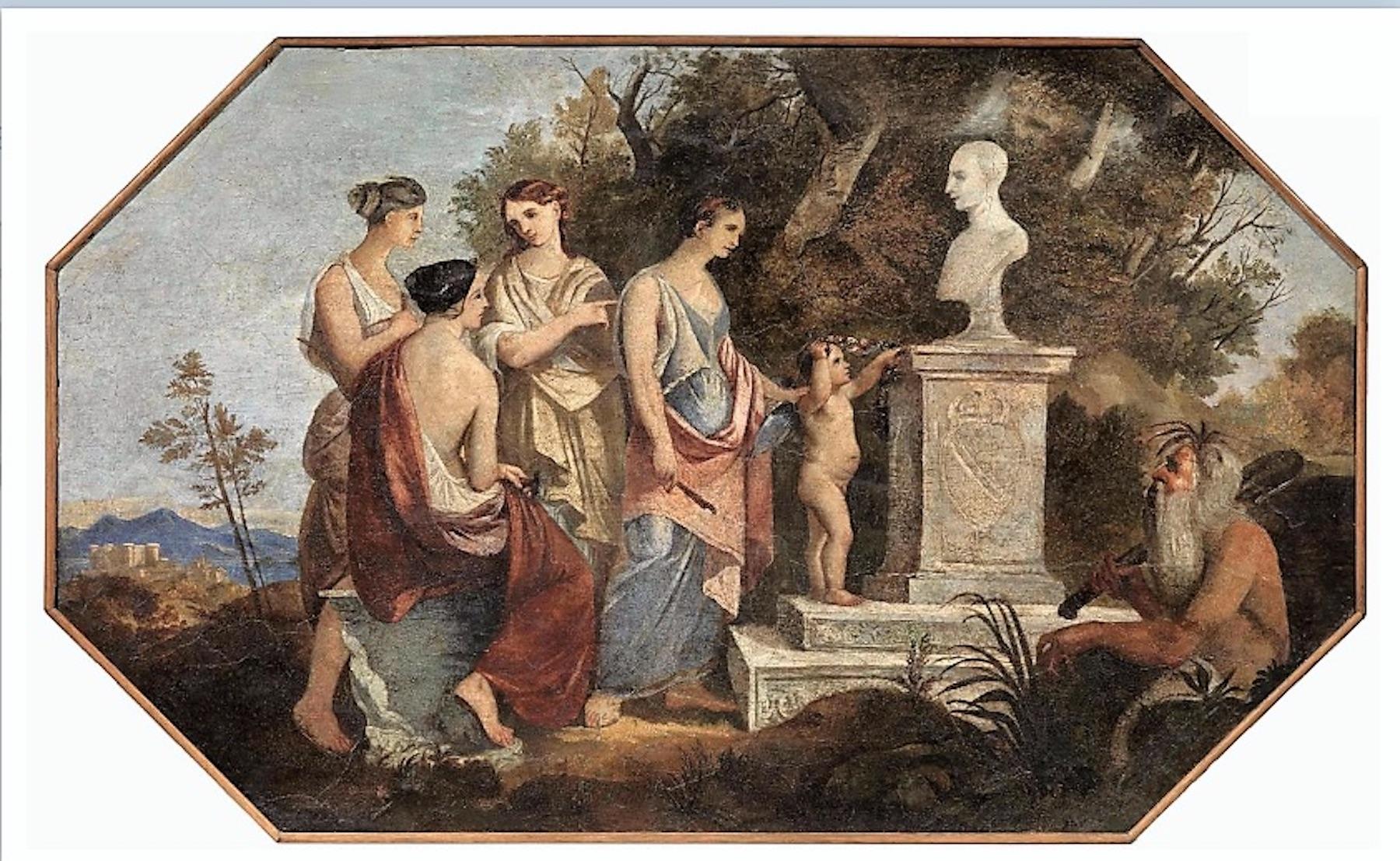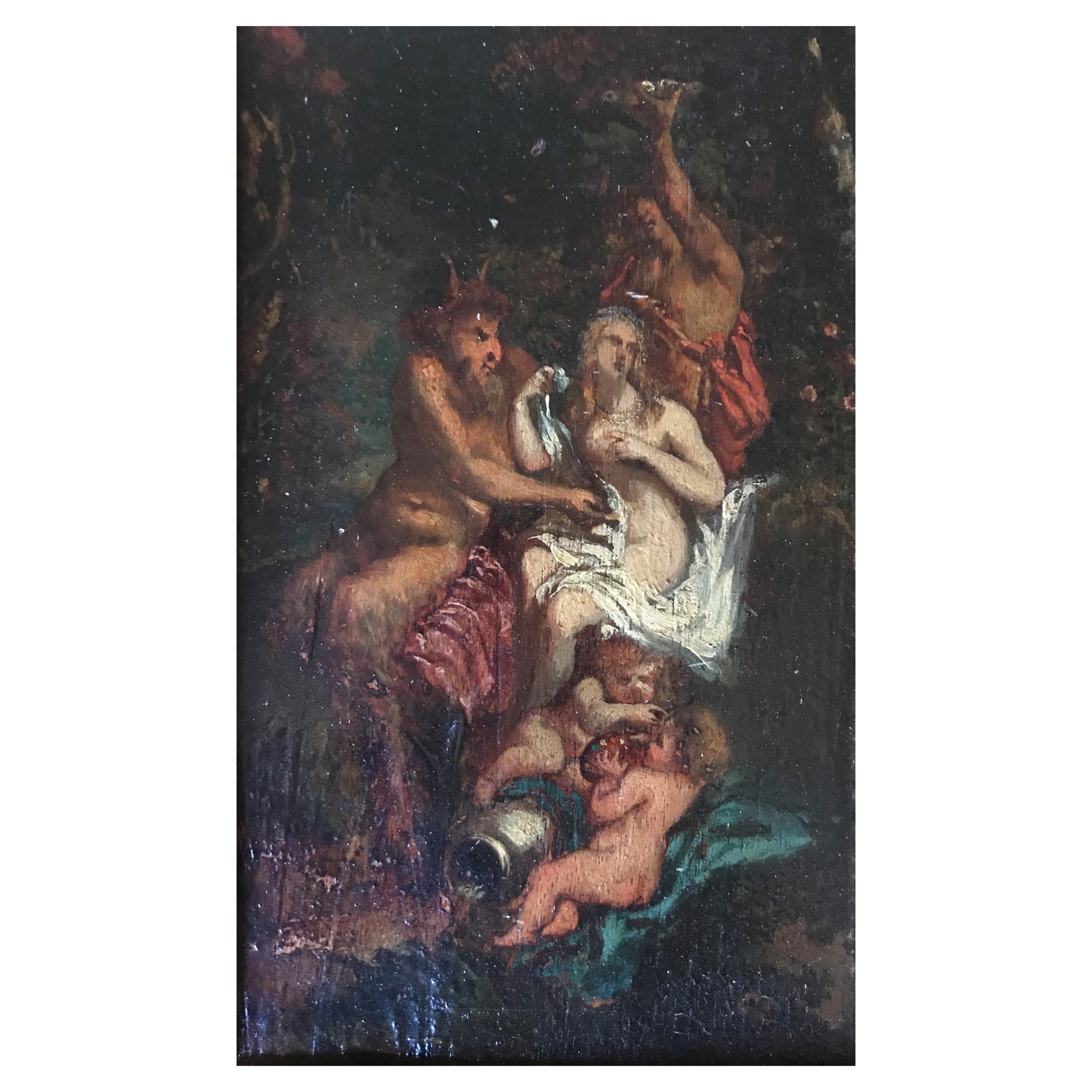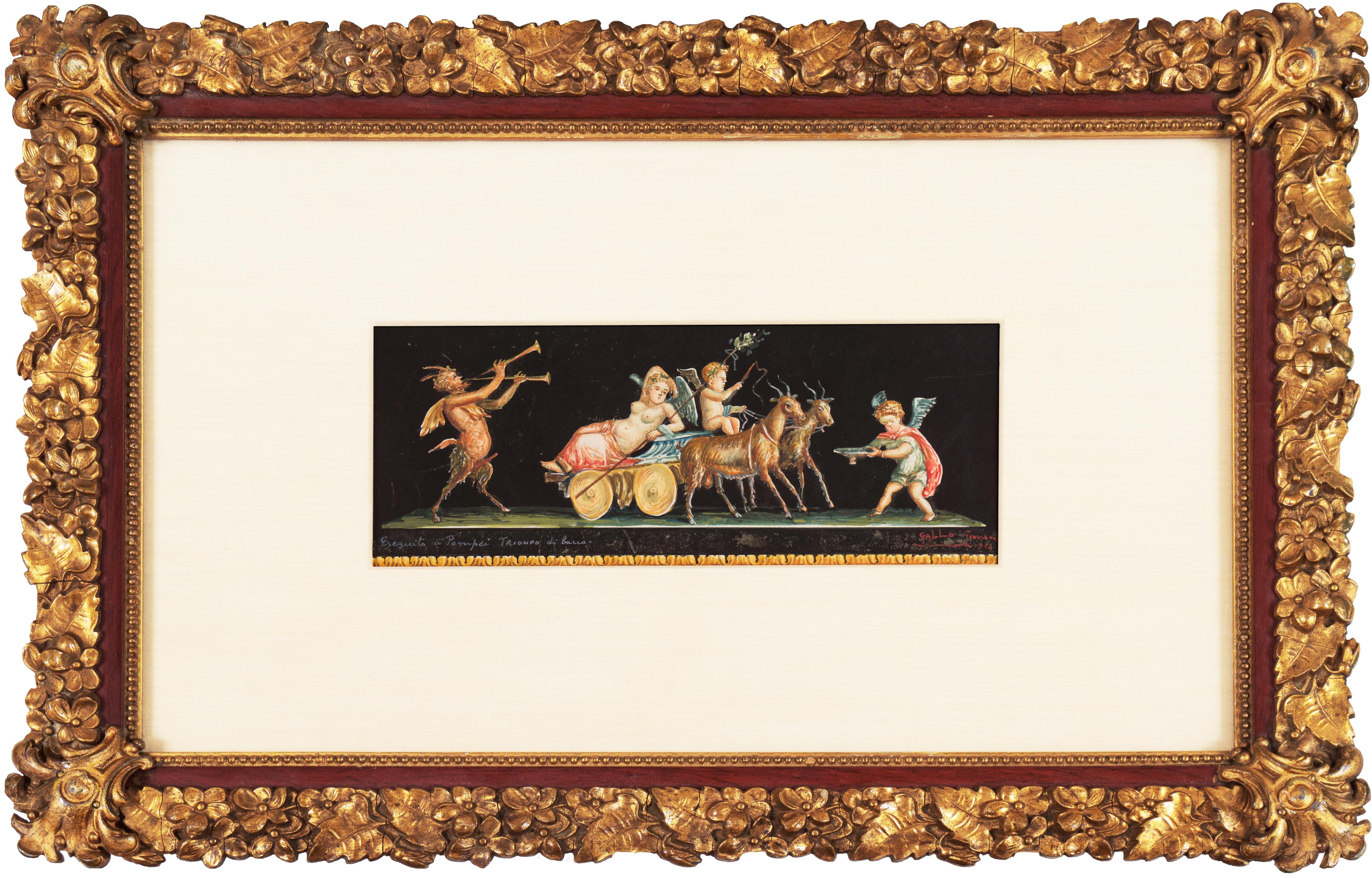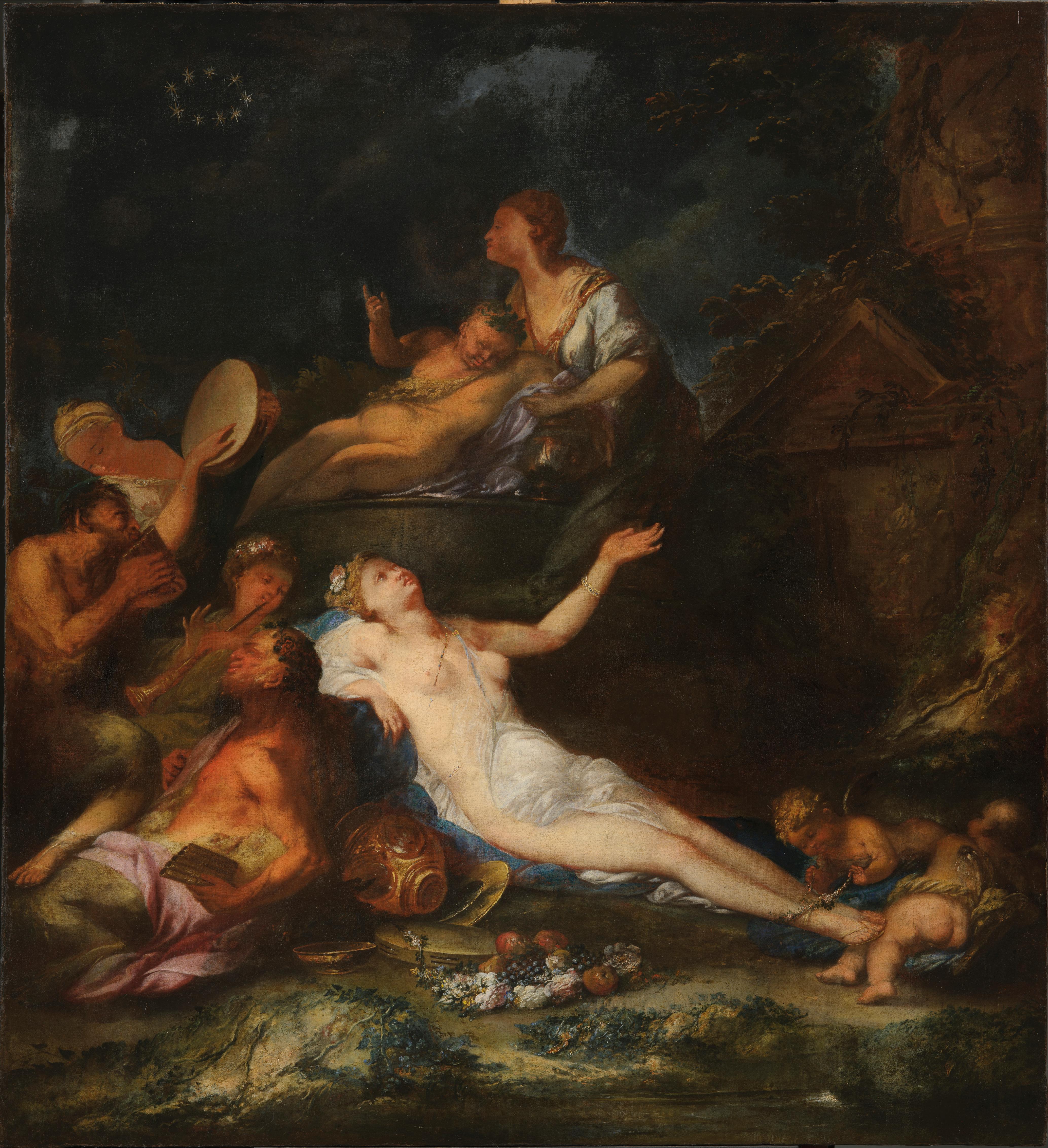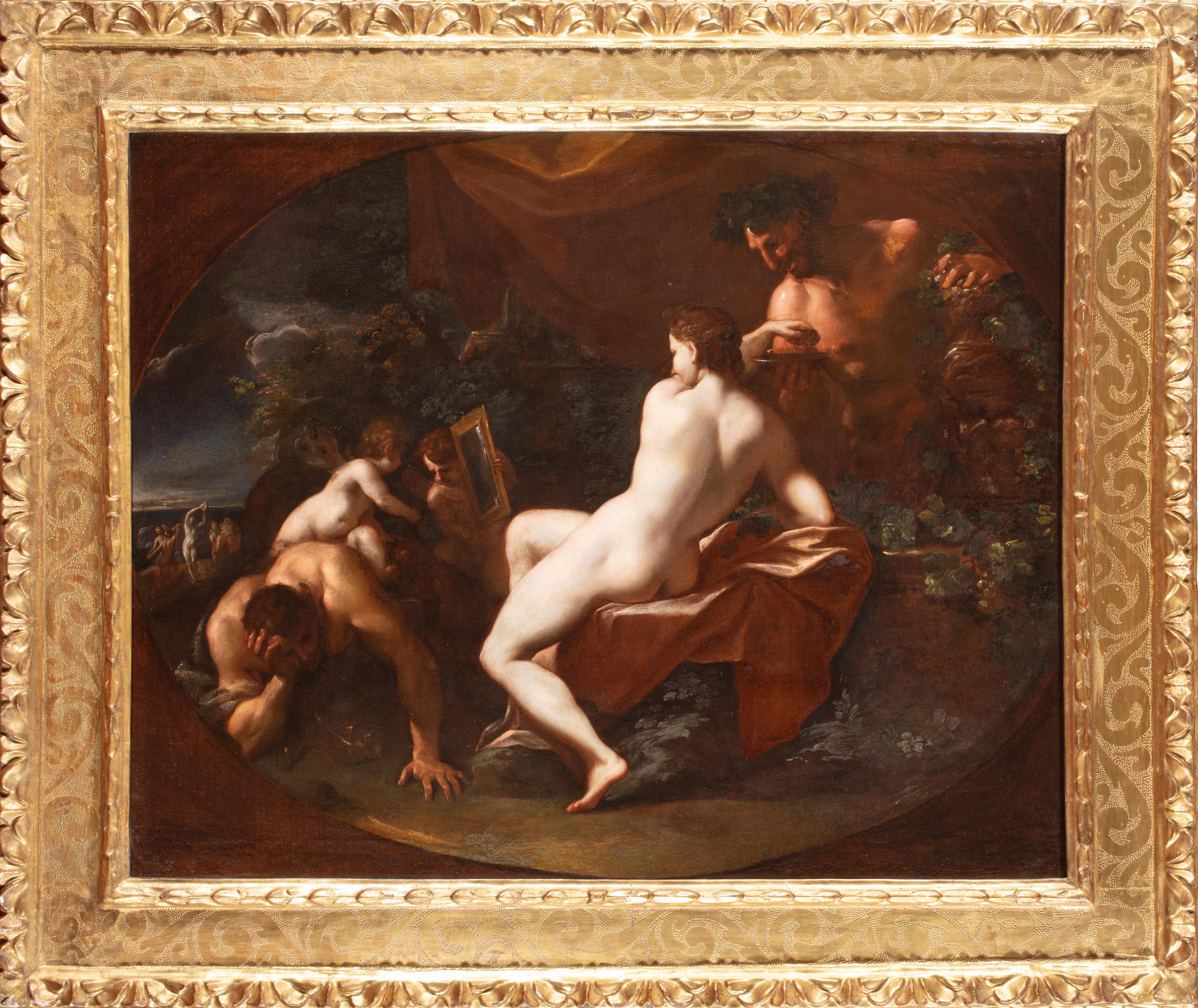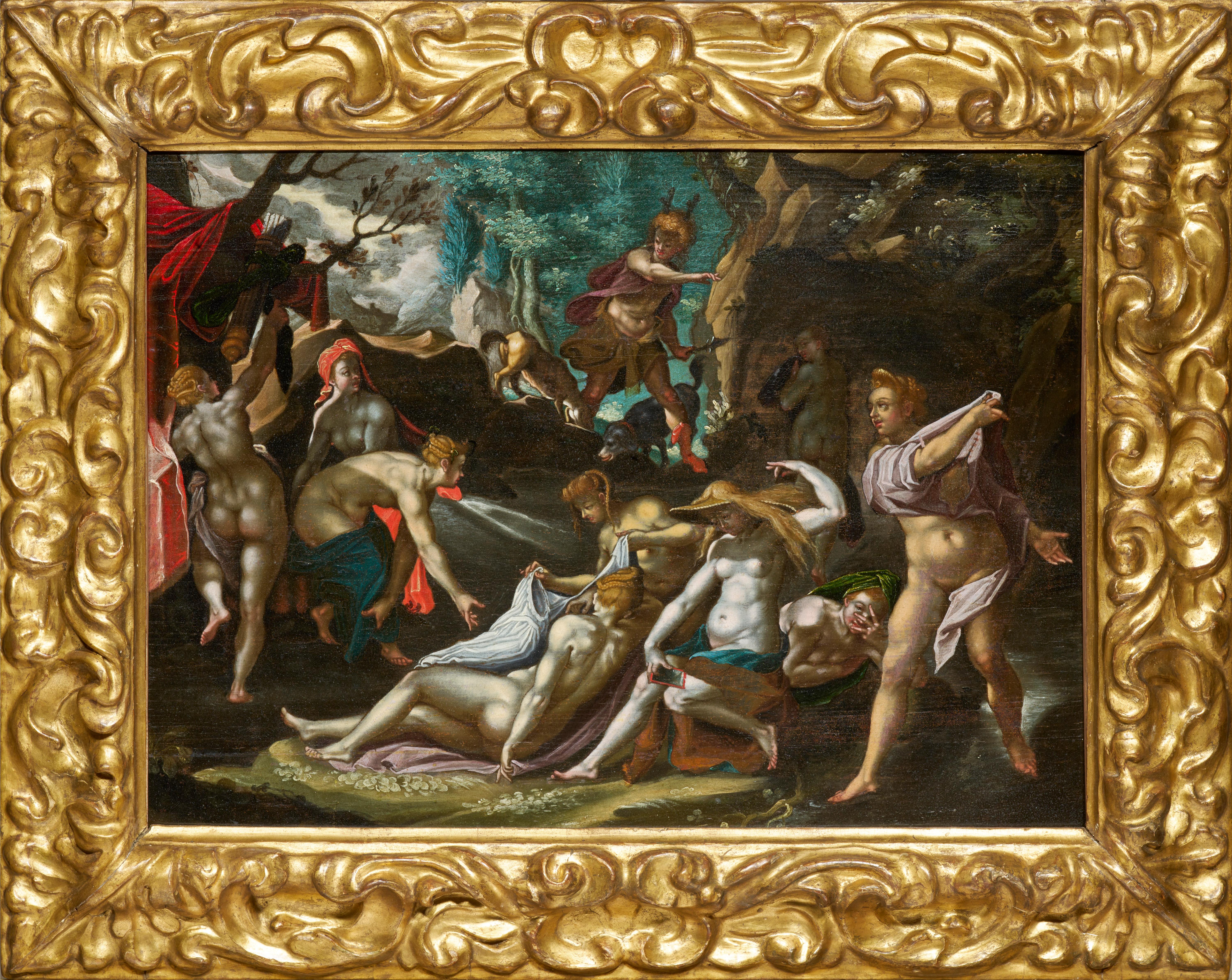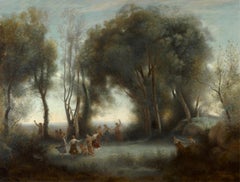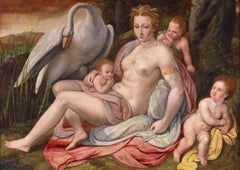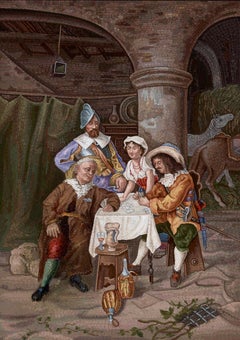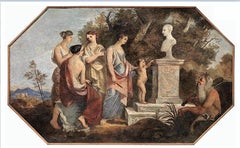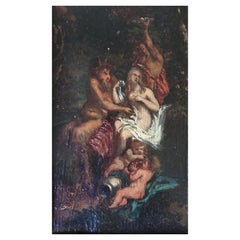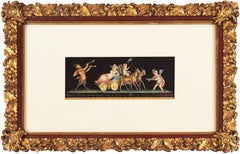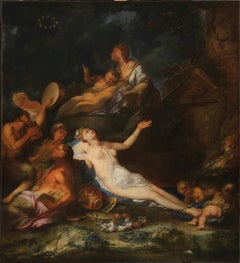Items Similar to Italian Panel with Satyr and Nymphs
Want more images or videos?
Request additional images or videos from the seller
1 of 8
UnknownItalian Panel with Satyr and NymphsCirca 1800
Circa 1800
Price Upon Request
Price Upon Request
Price Upon Request
Price Upon Request
Price Upon Request
Price Upon Request
Price Upon Request
Price Upon Request
Price Upon Request
Price Upon Request
About the Item
This extraordinary Italian gouache and oil on canvas brings two of the most popular characters from Greek mythology vividly the life - the nymph and the satyr. Both creatures are famed for their carefree natures and lascivious temperaments, and tales abound of satyrs pursing nubile nymphs in order to rape or seduce them, usually with little success. One such narrative humorously unfolds in the present piece, which depicts an indignant satyr captured by three nymphs with a golden net.
The relationship between these two mythological creatures was a popular one for artists throughout the 18th and 19th centuries, though its origins stretch back to antiquity. Both satyrs and nymphs were commonly found on ancient Greek pottery, which inspired later Italian revivals such as the present piece. A similar scene was also captured by the great William-Adolphe Bouguereau in his 1873 masterpiece Nymphs and Satyr, wherein a group of nymphs is surprised by a lascivious satyr while bathing.
Among the most popular of the Greek mythological characters, the satyr and nymph are brilliantly recreated in this gouache and oil on canvas. Likely once displayed in the music room of an Italian villa, it is an exceptional example of its genre.
Circa 1800
Canvas: 31 1/2" high x 48" wide
Frame: 52 1/4" wide x 36" high
- Creation Year:Circa 1800
- Dimensions:Height: 52.25 in (132.72 cm)Width: 36 in (91.44 cm)
- Medium:
- Period:
- Condition:
- Gallery Location:New Orleans, LA
- Reference Number:Seller: 30-90801stDibs: LU1868619872
About the Seller
5.0
Vetted Professional Seller
Every seller passes strict standards for authenticity and reliability
Established in 1912
1stDibs seller since 2013
19 sales on 1stDibs
Typical response time: 4 hours
- ShippingRetrieving quote...Shipping from: New Orleans, LA
- Return Policy
Authenticity Guarantee
In the unlikely event there’s an issue with an item’s authenticity, contact us within 1 year for a full refund. DetailsMoney-Back Guarantee
If your item is not as described, is damaged in transit, or does not arrive, contact us within 7 days for a full refund. Details24-Hour Cancellation
You have a 24-hour grace period in which to reconsider your purchase, with no questions asked.Vetted Professional Sellers
Our world-class sellers must adhere to strict standards for service and quality, maintaining the integrity of our listings.Price-Match Guarantee
If you find that a seller listed the same item for a lower price elsewhere, we’ll match it.Trusted Global Delivery
Our best-in-class carrier network provides specialized shipping options worldwide, including custom delivery.More From This Seller
View AllDance of the Nymphs
By Paul Desire Trouillebert
Located in New Orleans, LA
This lyrical landscape entitled Dance of the Nymphs was composed by the French Barbizon painter Paul Désiré Trouillebert. A joyful scene of nymphs dancing the morning fog, the work closely resembles an important work by the great Camille Corot, which is now housed at the Musée d'Orsay (Paris). Renowned for his unique individuality that toed the line between the traditional and modern, Corot and his landscapes helped pave the way for an entire generation of Impressionists who followed him. Trouillebert perfectly captures the poetic atmosphere of Corot’s groundbreaking works, while also imbuing this scene with a freshness and character that is all his own.
Trouillebert's oil on canvas is exemplary of the tradition of historical painting. The work perfectly combines a realistic depiction of the natural world with a spirited romanticism as his idealized nymph figures frolic playfully beneath a crisp morning sky. As a whole, it is a lovely composition executed with a level of skill and artistry that proves Trouillebert's exceptional talent in the arts.
Born in Paris in 1831, Paul Désiré Trouillebert was a student of the academic painters Ernest Hébert...
Category
19th Century Academic Landscape Paintings
Materials
Canvas, Oil
Leda And The Swan By Workshop Of Bartholomaeus Spranger
Located in New Orleans, LA
Workshop of Bartholomaeus Spranger
16th Century Flemish
Leda and the Swan
Oil on panel
Retelling one of the most legendary Greco-Roman mythological tales, this exceptional oil on...
Category
16th Century Old Masters Nude Paintings
Materials
Oil, Panel
Florentine Pietre Dure Plaque
Located in New Orleans, LA
Florentine Pietre Dure Plaque
18th Century
A triumph of Florentine craftsmanship, this monumental pietre dure panel stands among the finest surviving examples of its kind. Created i...
Category
18th Century Mixed Media
Materials
Stone, Alabaster, Marble
Gamblers Italian Micromosaic
Located in New Orleans, LA
A friendly game of cards is the subject of this 19th-century Italian micromosaic. A special type of mosaic that uses incredibly small pieces of tesse...
Category
19th Century Other Art Style More Art
Materials
Glass, Mosaic
Bronze of Amphitrite after Michel Anguier
Located in New Orleans, LA
After Michel Anguier
French 1612-1686
Amphitrite
Bronze
This remarkable bronze masterpiece was cast after a High Baroque masterwork by French sculptor Michel Anguier. After traini...
Category
17th Century Baroque Nude Sculptures
Materials
Bronze
Pietre Dure Plaque Of Ancient Artisan By Alberto Menegatti
Located in New Orleans, LA
A young man clad in classical robes paints an amphora vase as an attractive admirer observes him in this magnificent pietre dure plaque by Florentine artisan Alberto Menegatti. The work is emblematic of the charming scenes of rural life that were favored by Italian pietre dure artists. The superlative quality and beauty of the stone specimens utilized to create the composition distinguish this piece, and the artist’s ingenious use of the natural striations and inclusions in his stones allows him to convey texture and shadow to brilliant effect.
The art of pietre dure developed from the ancient art of opus...
Category
Early 20th Century More Art
Materials
Stone
You May Also Like
Allegoric Scene with Vestal Virgins and Satyr - 19th Century - Painting - Modern
Located in Roma, IT
Beautiful Detached Fresco shaped in Octagonal Form designed by a Roman Master of the beginning of 19th century.
In excellent conditions.
This artwork is shipped from Italy. Under ex...
Category
19th Century Modern Figurative Prints
Materials
Paint
18th Century Italian School Painting "Faun and Nymph"
Located in Beuzevillette, FR
Beautiful oil on panel from the Italian school of the 18th century representing a faun trying to seduce a half-naked nymph, behind them a man seems to hav...
Category
Antique 18th Century Italian Paintings
Materials
Wood
'Bacchanal', Mid-century Pompeii, Roman Mythology, Bacchus, Neo-classical
By Giovanni Gallo
Located in Santa Cruz, CA
Signed lower right, 'Gallo Giovanni' for Giovanni Gallo (Italian, 20th century) and dated 1954.
Titled lower left, 'Eseguito a Pompei, 'Trionfo di Bacco'' (Done in Pompeii, 'Triumph...
Category
1950s Nude Drawings and Watercolors
Materials
Paper, Gouache
17th Century by Bartolomeo Guidobono Bacchanal with Maenads, Satyrs and Nymphs
Located in Milano, Lombardia
Bartolomeo Guidobono (Savona, Italy, 1654 - Turin, Italy, 1709)
Title: Bacchanal with Maenads, Satyrs and Nymphs
Medium: Oil on canvas
Dimensions: without frame 120 x 110 cm - with f...
Category
17th Century Old Masters Figurative Paintings
Materials
Oil, Canvas
17th Century By Domenico Maria Canuti Toilet of Venus with Cupids and Satyrs
Located in Milano, Lombardia
Domenico Maria Canuti (Bologna 1626 - 1684)
Title: Toilet of Venus with Cupids and Satyrs
Medium: Oil on canvas
Dimensions: without frame 79 x 98 cm - ...
Category
Late 17th Century Old Masters Figurative Paintings
Materials
Cotton Canvas, Canvas, Oil
Diana and Actaeon, a Mannerist painting after Joseph Heintz the Elder
Located in PARIS, FR
This painting seduced us with its rich colors. Depicting Diana and her companions surprised by Actaeon, it was inspired by an engraving by Aegidius Sadeler II after a painting by Jos...
Category
17th Century Old Masters Nude Paintings
Materials
Oil, Wood Panel
